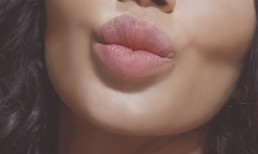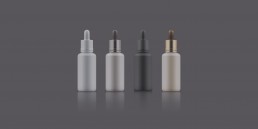fiona
The ‘Lip Job’ Uncovered
Lip fillers are on the rise across the globe, the treatment’s popularity has sky rocketed due to platforms such as Instagram, Facebook and Twitter, the accessibility to pout perfect celebrities and the booming beauty business have made lusting after the perfect lips the norm. The American Society of Plastic Surgeons' 2016 report showed that lip filler treatments have risen by 50% from 2000-2016. Whether you love a subtle enhancement or want to rock the Jenner pout there is a lip augmentation for you, we have decided to write this post to cover some of our FAQs.
What are lip fillers and is it a safe product to have injected into my face?
The filler itself is a hyaluronic acid molecule, which is a naturally occurring compound in the body; this means reaction rates are very low as your body doesn’t recognise the filler as a foreign body or a threat. Hyaluronic acid attracts water and can hold up to 1,000 times its own weight. When injected into the border and body of the lip this results in a plumper, more defined and hydrated effect.
Can anyone have them?
For fillers (and any non-invasive injectable treatments) patients need to be aged 18 and over. No clinical studies have ever been carried out with pregnant or breastfeeding participants, so we avoid treating women during these times. As long as you don’t have a history of an allergic reaction to dermal filler or lidocaine (local anaesthetic) most candidates are suitable. We also advise any clients who are prone to cold sores to take a prophylactic course of Aciclovir prior to treatment to help to avoid the treatment triggering a breakout, this can be prescribed for you at consultation by our Director, Fiona.
How long do lip fillers last?
It depends on the product, the patient and a number of other factors such as smoking, frequency and intensity of exercise and frequency of sun exposure. As a ballpark figure the first time should last four to eight months and after that can be anything from nine months-plus. Longevity will depend on the person's metabolic rate and age. We suggest building up filler over time to achieve your desired result and then maintaining your shape and size with top ups every 6-12 months.
What's the healing time?
There is no downtime as such, swelling will occur for 24 to 72 hours post treatment- the degree of swelling will vary from client to client, some may hardly notice the swelling whereas others will have more, swelling is completely normal due to trauma (injections) to the lip area. Bruising is rare however clients should be aware that this can occur- we advise not having any big events in the diary for two weeks following your procedure to give everything a chance to settle down.
How much do lip fillers cost?
This varies depending on the practitioner and product, but you can expect anything from £150 to beyond £1,500. You should think of it a little like a hairdresser - you are paying for the expertise of the practitioner rather than the actual product. We pride ourselves on having a fair price point which offers a thorough consultation, a pleasant and safe experience with aftercare and advice on hand at any time if it is required.
What if I’m not happy with the results?
Lip fillers can be dissolved very quickly. An eraser enzyme called Hyalase will almost instantly dissolve the filler which will result in the lips returning to their normal shape. All reputable practitioners must be trained to use Hyalase and be able to prescribe this for their patients if need be- this is a very important question to ask when having a consultation with any practitioner.
Retinols; the queen of skincare?
Retinol is a derivative of vitamin A and is most commonly used as an anti-ageing and skin perfecting product. It has been shown to reduce the appearance of fine lines and wrinkles, sun damage and pigmentation, reduce acne and combat post inflammatory hyper-pigmentation left on the skin after breakouts.
Retinols are the most effective product when it comes to anti-ageing. Using an SPF daily and a retinol a few times a week will work wonders for your skin in terms of protection and enabling it to age well. Dr Macrene Alexiades-Armenakas, a New York City-based dermatologist, goes as far to say that "there is not a single class of ingredient that can rival the track record that retinoids have for proven scientific results” (Harpers Bazaar, 2018).
To work effectively our skin needs retinols to be broken down into retinoic acid which enables the regeneration of skin cells and stimulates the production of collagen. To achieve these results prolonged use is crucial; initially retinols can irritate skin and at times result in dryness and redness, however perseverance is key; retinol use should be built up over time while listening to your skin and assessing your own tolerance to the product.
For example:
Week 1 & 2: Use one evening
Week 3 - 5: Use two evenings
Week 5-9: Use three evenings
Week 10- onwards: Use four evenings a week if tolerated well.
The percentage of active retinol in a product can also be built up over time; brands such as The Ordinary and Le-Roche Posay offer excellent Retinols with 0.2-0.3% which are perfect for introducing this product into your routine- over time this can be increased to 1-2% or kept at a lower percentage and used more frequently, again depending on your skin’s tolerance.
Finally, keep your skin safe ladies and gents , if you have a retinol in your skincare routine it is crucial to use an SPF daily as your skin is more susceptible to burning. We love Heliocare SPF 50 however any broad spectrum SPF over factor 30 should do the trick!
Other retinols that we love…
Medik8 (arguably the queen of retinols):
Botox vs. Micro-Needling
What is right for me?
At The Aesthetics Club we pride ourselves on offering a wide variety of rejuvenating treatments. It is important to us that our patients feel informed when it comes to choosing the most appropriate treatment to improve the concerns they have.
We are often asked to outline the pros and cons of Botox vs.micro-needling; they can both be used to improve fine lines and wrinkles but which one is best for you? Botox temporarily stops the clock on deep wrinkles forming and when performed by a skilled hand has a wonderful rejuvenating effect. Micro-needling concentrates on the skin’s condition; it improves skin texture, fine lines, pigmentation, acne scarring, pore size and lack lustre skin, in terms of skin rejuvenation micro-needling is hard to rival, but if deeper lines are your main concern Botox could be the treatment for you, read on to find out how each treatment will help you feel fabulous.
How Botox works
Botox smooths the appearance of lines and wrinkles but does not directly treat the surface of the skin. It is injected into the underlying muscle, partially paralysing it. This restricts muscle mobility – not so much that it prevents you from making normal facial expressions, but enough to reduce deep wrinkling when you frowns or squints. This can also help prevent wrinkles from deepening over time.
For anti-aging, Botox injections are most commonly used on frown lines, the forehead and crow’s feet. Patient’s no longer have to worry about the face-freezing results formerly associated with this product. Botox is now used more judiciously, to achieve far more subtle effects. The amount required depends on the severity of your wrinkles and the desired results.
The effects of Botox slowly diminish, but injections can be repeated indefinitely if you would like to maintain results. You can schedule sessions at 3-6 month intervals, depending on your needs.
How micro-needling works
This procedure aims to rejuvenate the skin’s appearance by stimulating the production of healthy new cells. This literally renews the skin, so the result is smoother, more radiant, firmer and more youthful in appearance.
At The Aesthetics Club we use Dermapen®, the most advanced micro-needling pen on the market. This hand-held tool delivers superior results for our patients, it is virtually pain-free and allows problem areas to be highly targeted, this makes it easy to treat even narrow or hard to reach areas such as around the nose. The procedure can be used anywhere on the body to treat a whole host of conditions from acne scarring to stretch marks.
Tiny needles create microscopic punctures that close almost immediately. The body works naturally to repair these wounds. Newly-formed capillaries increase blood flow, and newly-produced collagen and elastin improve the structure and texture of the skin. Dermapen® micro-needling does not damage the epidermis long term, it simply causes minor trauma in the area to kick of the body’s own healing cascade. There is virtually no risk of infection or scarring from the procedure, redness will be present for around 24 hours afterwards however this can be easily covered with a mineral based make-up.
Tightening and smoothing results are visible almost immediately, however it continues to improve the skin’s condition up to18 months post treatment. We usually recommend 3-5 treatments to address wrinkles and fine lines or conditions such as acne scarring. Sessions are usually spaced about a month apart, giving the skin ample time to continue healing between procedures.
A combined approach…
All skin types are suitable candidates for both micro-needling and Botox injections. Depending on your needs, you may even like to try both treatments to achieve optimal results, we use micro-needling to improve the surface and deeper condition of the skin, while Botox injections help improve the longevity of your results. Book in for a free consultation now to find out how we can help you achieve flawless skin.



 WhatsApp us
WhatsApp us